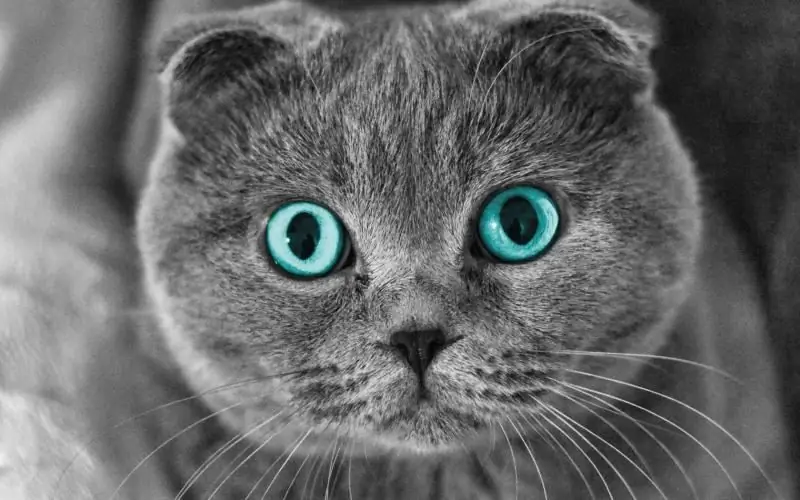
Table of contents:
- Author Bailey Albertson [email protected].
- Public 2024-01-17 22:26.
- Last modified 2025-06-01 07:32.
Scottish fold cat

A neat round head, big eyes, drooping small ears - this is how Scottish Fold cats look like. Due to this appearance, these animals resemble little owls. In addition to its appearance, this breed is distinguished by its good-natured character and friendliness towards people and other animals.
Content
- 1 History of the origin of the Scottish Fold breed
-
2 Description of the fold breed
2.1 Photo gallery: colors of the Scottish Fold cat
- 3 Character and behavior
-
4 Diseases of the breed
- 4.1 Hypertrophic cardiomyopathy
- 4.2 Degenerative joint disease
- 4.3 Osteochondrodysplasia
-
5 Choosing a Scottish Fold kitten
- 5.1 How to care for a kitten
- 5.2 How to choose a name for a kitten
-
6 Breed care
- 6.1 Cat litter
- 6.2 Feeding the Fold breed
-
7 Breeding Scottish Fold cats
7.1 Castration and sterilization
- 8 Video: Scottish Fold cat
- 9 Reviews of the owners about the fold breed
The history of the origin of the Scottish Fold breed
The history of the emergence of the Scottish Fold is rather unusual, because the breed was bred from a yard cat with long hair and unusually curved ears, at that time such an ear structure was considered a genetic mutation. In 1961, in Scotland, a shepherd interested in breeding cats noticed a long-haired white yard cat with an unusual set of ears. When the cat brought the kittens, he took one kitten for himself, raised and bred with a British shorthair cat. As a result of this crossing, straight and fold kittens appeared.
Initially, the breed was simply called Fold, the Scottish prefix was given to it a little later at the place where it was bred. There are two types of breed - short-haired and long-haired fold cats.

The breed was bred by a Scottish shepherd and got its name from the place of breeding.
After a while, Scotland stopped working on this breed for fear that the mutation could have consequences in the form of ear infections or deafness in cats, which is why the breed was not officially recognized in Scotland. Active breeding of the breed was started only in 1978 in the USA. In the same year, the breed is officially registered in one of the largest felinological organizations called CFA (Cat Fanciers' Association). In the International Cat Breeding Federation for Europe (FIFE), the breed was never recognized due to lop-earedness and associated mutations. But regardless of this, tartan folds are very popular in America and Australia.
Description of the fold breed
Lop-eared Scots are usually of medium size. Height at the withers of an adult is from 20 to 30 cm. The body is elongated, flexible, the tail is medium or long, depending on the proportions of the cat's body. Weight is only 1.5-2 kg. The ears of the breed are similar to a folded envelope, but there are three types:
-
ears tightly to the head;

Lop-eared kitty Ears that are strongly pressed to the head need frequent care
- less flattened ears;
- folded only half of the auricle.
The head is perfectly round. The eyes are large, the color most often depends on the color of the coat and ranges from blue to amber brown. The coat is soft, plush, short.
Photo gallery: colors of the Scottish Fold cat
-

Scottish fold -
Fold cat's solid chocolate color does not allow for a different shade of undercoat
-

Tricolor fold cat - Tortoiseshell colors are found in cats, for cats such a color is a genetic failure
-

Plaid - The name of the popular color "Whiskas" - gray and white stripes - comes from an advertisement for food
-

Lop-eared tartan - Most often, the color of a cat's eyes depends on the shade of its coat.
-

White fold cat - In newborn white kittens, spots on the coat are allowed, but adults should be perfectly white
The long-haired Scottish cat is similar to the short-haired one: medium body size, long tail, ears pressed to the head, huge eyes. The weight of an adult cat is from 3 to 8 kg. The cat is distinguished by long beautiful hair, because of which it looks like a large fluffy lump.

Highland Fold has a long and beautiful coat, which makes it look like a big fluffy ball
Character and behavior
Most often, most of the breed are good-natured cats. But there are always exceptions to the rule - some lop-eared cats may have a wayward character, differ in isolation, may not pay attention to the calls of the owner and may not even come up to be petted.
But in most cases, the Scots are very fond of attention, affection, get along well in the family, get along with children and other animals, especially if they grew up together.
Fold cats can treat strangers with caution and great caution, but realizing that nothing threatens them, they will easily make contact.
A lop-eared cat senses who is its owner, and it will not leave him a step, in some cases it can even protect against any danger. The breed is very active, loves to play various teaser toys or just play with a small ball or a toy mouse. They can play on their own, but they love more human attention and participation in joint games. They also like to spend their holidays next to a person, curled up in a ball and sometimes glancing at what the person is doing.

Lop-eared cats love to play, especially if the owner takes part in their games
Diseases of the breed
Life expectancy of Scottish Fold cats is from 10 to 15 years. For an animal to live a long and healthy life, it is necessary to visit a veterinarian on time, get the appropriate vaccinations, check joints and follow the advice of a veterinarian. The breed has some underlying health problems.
Hypertrophic cardiomyopathy
Hypertrophic cardiomyopathy is a hereditary heart disease. Symptoms:
- tachycardia;
- dyspnea;
- heavy breathing with wheezing;
- pulmonary edema;
- fainting;
- failure of the pelvic limb, in rare cases, both limbs can fail;
- high blood pressure.
The disease is diagnosed by measuring the pressure of a veterinarian, passing an echocardiogram (data on the functionality of the heart), visual assessment, X-ray diagnostics, electrocardiography. Animals in serious condition should be treated only in a hospital clinic, where there are all conditions for such cats. The veterinarian examines the condition of the animal, prescribes treatment, small physical activity and a special diet. If the animal feels better, it can be treated at home, unquestioningly following all the instructions of the treating veterinarian. It is possible to cure the problem, but such cats will always have to be checked by veterinarians-cardiologists.
Degenerative joint disease
This disease is characterized by pain in the tail (most often), limb mobility decreases. Symptoms:
- obvious lameness;
- unwillingness of the cat to jump on chairs or sofas;
- it is difficult for the cat to rise from the floor after rest;
- frequent and prolonged licking of the joints when washing;
- the cat becomes irritable, may hiss, scratch or bite.
The disease is treated with anti-inflammatory nonsteroidal drugs, if the disease is neglected, then antibiotics are prescribed. Additionally, a diet may be prescribed.
Osteochondrodysplasia
It is expressed in deformation of the legs, skeleton, immobility of the tail. Symptoms:
- lameness (it can pass and appear again, and the animal, if ill, will not be able to jump on a hill);
- squat appearance;
- constrained gait;
- acute reaction to touching the tail;
- severe deformity of the hind limbs;
- staggering gait.
Treatment focuses on treating symptoms with medication. In the absence of polycystic kidney disease, a non-steroidal anti-inflammatory drug can be prescribed, it will relieve the cat of pain and remove inflammation. Additionally, vitamin complexes and special supplements are prescribed. In the UK, such sick cats are exposed to radiation of the extremities, for a long time the cat can safely walk, run and jump. There are no such technologies in Russia, so such operations are not carried out.
Choosing a Scottish Fold kitten
If you want an animal for exhibitions and further breeding, then look for a kitten in elite nurseries. Most have sites on the Internet where you can see reviews, the animals themselves, information about the breeder and other useful things. If you need a pet just for fun, then you can look for a pet on sites with ads.
Regardless of the purpose for which you have an animal, first of all pay attention to the appearance and behavior of the kittens. Healthy kittens are active, with soft hair and non-flowing eyes. If the kitten is lethargic, then this is a sure sign of some kind of ailment. Ask the breeder to show you the kittens' parents - you can roughly imagine how the kitten will look in the future.

When choosing a kitten, you need to pay attention to activity: the more active the animal, the healthier it is.
Ask about the age of the kittens. The best age for selling offspring is 3 months, at this time the kittens are already quite independent: they themselves eat, wash, play and go to the toilet. Ask the breeder about the documents: veterinary passport and pedigree (if you have and need it).
If there are a lot of kittens, then watch them, the peculiarities of their character or behavior will help you choose exactly the kitten that suits you. When choosing a gender, think about it: if you want to tinker with small kittens, then choose a cat - there are fewer problems with them, they will not mark every corner, unlike cats. If you want a cat, then be prepared for the fact that he can mark sofas, carpets or curtains. In addition, it is worth deciding whether you will neuter / neuter your animal.
Prices for fold kittens depend on the availability of pedigree, color and coat length. Long-haired Fold Scots cost twice as much as short-haired. A kitten without a pedigree costs from 3 to 6 thousand rubles, with a pedigree - from 10 to 40 thousand rubles.
Distinctive features of this breed:
- soft plush fur;
- ears pressed to the head;
- unusual coat color;
- short coat for Scottish Folds, long for Highland Folds;
- small but elongated body, small tail;
- blue eyes in all kittens, the shade changes with age;
- at three months, the kitten weighs no more than 500 g, and the height at the withers is about 15 cm.
How to take care of a kitten
When you bring your new pet home, make sure it has everything it needs. This includes:
- house;
- restroom;
- bowls for food and water;
- hairbrush for cats;
- toys.
A small kitten requires increased attention to itself. In the first week, he can be intimidated and unsociable, this is due to a change of place, he will get used to it over time. At first, food, a house and a toilet should be nearby so that the animal does not get lost and does not make a puddle on the carpet.
You need to feed the kitten in small portions, from 2 to 6 months at least five times a day. Clean, fresh, unboiled water should always stand. You can bathe the animal every three or four months as it gets dirty, the ears should be cleaned as it gets dirty, do not forget about the eyes, from which tears can flow, they can be wiped with a cotton pad.

Scottish Fold ears should be cleaned twice a week.
Once a quarter, the kitten needs to be treated with special veterinary drugs for fleas, ticks and worms.
How to choose a name for a kitten
When coming up with a nickname for an animal, you should adhere to some rules:
- do not give the animal a long name;
- to choose a suitable nickname, observe the kitten, its character and activity - most often it is from these features that a name for the pet is invented;
- if you have a child, you can let him come up with a nickname for a cat, for sure there are many cartoon names in the child's memory that may suit your pet.
You can choose a name for a kitten, starting from its color. For example, a white girl can be called Snezha, Blondie, Jasmine, and a white boy - Snowball, Percy, Pooh, Zephyr, Santa. The red-haired girl can be called Squirrel, Fox, Toffee, Sonya, red-haired boy - Fox, Garfield, Ogonyok. With black cats in general, everything is simple, a girl - Blackie, Puma, Bagheera, Gloom, Voodoo, a boy - Morphy, Inferno, Motti, Mystic.

The name of the cat can be chosen based on the color of the coat, for example, a red cat can be called Sonya, Ryzhulya, Fox
Breed care
You need to bathe a lop-eared cat no more than once every 3-4 months or as it gets dirty. Use a cat shampoo when bathing, after bathing, wipe the cat with a towel and preferably dry it with a hairdryer, especially in winter so that the animal does not catch cold.
I bathe the cat every three months, each time drying it with a hairdryer so that this wet creature does not fall on a clean bed or stick to itself with dust or other dirt. Considering that my cat loves to lie on the ground in a large flower pot, blow-drying is a salvation from dirty paws and repeated bathing.
The Fold cat is the only one of all breeds that loves to be scratched against the grain. For combing, you can purchase a comb with metal tips, but by no means a slicker. The slicker can ruin the Scottish coat, and it will turn from a plush into a wadded one, the cat will lose its beautiful appearance. Long-haired cats should be brushed once a day. Highland folds don't like swimming, so once every 6 months will be enough.
Since the ears of the breed are pendulous, brushing should be done more often than with normal cats. It is done twice a week with a cotton swab and ear drops for cats. The claws are trimmed as they grow back with special scissors, they remove the very tip of the claws.

When cutting, the main thing is not to touch the blood vessel in the claw.
Cat toilet
First you need to find a place for the cat litter box. Most often, the owners choose a bathroom or toilet for these purposes, in some cases it may be a corridor or a landing on the stairs in a private house. For small kittens, the tray should be placed next to the house, and then, as you grow, you can rearrange the tray wherever you like.
You also need to choose a litter box for your pet. They come in three varieties:
- open with lattice;
- open without grill, but with filler;
-
euro toilet.

Euro-toilet for a cat The Euro-toilet looks nice and is easy to clean
For a closed euro toilet, a gel or silicate filler is needed, their price is rather big, but the fillers block unpleasant odors, the tray itself looks nice outwardly, the filler does not spread across the floor; the disadvantage of such a toilet is the large size of the tray, which may not fit in a small apartment.
The filler tray is also very convenient: the tray itself is inexpensive, you can choose any filler for it according to your taste and wallet size, and it is convenient to change such a tray.

Ideal for cats - large litter tray
In my opinion, the most convenient filler is woody. You can find it in any store, it is inexpensive, the filler is enough for a long time. Absorbs liquid well, blocking odors. And it is more pleasant for cats to walk on wood litter than on silicate balls or small pebbles.
For those people who are often at home and do not want to spend money on the constant purchase of fillers, you can recommend a simple tray with a grid. It is convenient to rinse such a pot with water, and once a week wash it with a chlorine-containing product to clean the tray and remove all odors.
This is exactly what happened with my cat. When I brought it home, I immediately put the tray with wood filler. She showed him where his tray was and put it in it. The cat refused to go to it for a day, endured. Then I decided to remove the litter and leave the tray empty. I immediately went about my business and was satisfied. So the toilet should be chosen taking into account the feline characteristics and desires.
Feeding the fold breed
You need to feed the animal taking into account the age:
- from 2 to 6 months - 5 times a day;
- from 6 to 8 months - three times a day;
- after eight months - twice a day.
The portion should be medium, you can find out its size by watching how much your pet eats. If the food is dry, then you can put more, anyway, the animal will eat it later, but this option will not work with natural food, because it can turn sour all day.
If you do not want to give dry food to the cat, then you can feed it with natural food. The diet should contain:
- sea fish;
- porridge;
- a hen;
- beef;
- turkey;
- cheese;
- cottage cheese;
- raw egg yolks;
- liver;
- vegetables.
It is not recommended to give to Scots:
- legumes;
- pork;
- potatoes;
- lamb;
- onion;
- milk;
- duck;
- sweet;
-
salty and spicy foods;

Cat in suit at the table In no case should cats be given food from the human table.
- salted preservation;
- chicken or fish bones;
- sausage;
- smoked meats;
- river fish;
- egg whites.
Sometimes I give my cat sour milk or some yogurt. These foods can be given to lop-eared cats, but in small quantities and infrequently. And it is better to leave cheese as a delicacy, otherwise the animal will not want to eat porridge or vegetables when there is an abundance of tasty cheese.
Breeding a Scottish Fold cat
Puberty in cats begins at about eight months. It is best to skip the first heat of a cat, but on the second, after a year, you can safely mix with the cat. If you have a fold-eared cat, then it should be taken with a straight-eared Scottish cat (Scottish Straight) in order to avoid health problems in the offspring.
Pregnancy in cats lasts 63-67 days. In Scottish cats, pregnancy is going well, cats at this time become more lazy, sleep more and eat more. Often during estrus or pregnancy in lop-eared cats the ears are slightly raised, over time they fall into place, this phenomenon is not considered a flaw. A fold cat can give birth to one to seven kittens.

Initially, all kittens are born with straight ears and only by the age of two weeks you can understand which kitten will be straight and which will be lop-eared
Most often, Scottish cats are good and caring mothers. They raise their kittens, feed them, lick them, and eventually teach them how to wash, play, where to go to the toilet, and where they can sharpen their claws.
Castration and sterilization
Sterilization and castration can be performed for both cats and cats, the difference is in the procedure itself. Sterilization involves ligation of the fallopian tubes in cats, and for cats, ligation of the seminal ducts. The operation does not affect the sex drive of animals, their instincts do not decrease and do not lose their intensity, animals can mate, but they cease to bear offspring. Castration is a complete surgical removal of all reproductive organs: in cats, the ovaries are removed along with the uterus, or just one ovary, in cats - both testicles.
An operation to sterilize or castrate an animal can be performed not earlier than puberty (8-10 months) and throughout its life. Not earlier than maturation, because at a young age the reproductive system is not yet fully developed in animals and the operation can only harm health.

After neutering, cats need extra attention and proper care.
The operation is performed by a veterinarian under general anesthesia. The operation is short-lived and rather uncomplicated. After carrying out the observation and care of the animal is necessary:
- Immediately after the operation, you need to monitor the pet, his breathing, and his general condition.
- Having come home, the animal should be placed on a warm mat away from windows and doors so that there is no draft.
- When the cat moves away from anesthesia, you need to put clean water nearby, you can feed it only a day after the operation in small portions and better with something liquid, like broth.
- For the first two days, treat a cat's wound with stitches with green stuff once a day, then with Chlorhexidine two or three times a day, after 10-12 days the stitches are removed.
Video: Scottish Fold cat
Reviews of the owners about the fold breed
If you want a kind, affectionate and active animal, then the Scottish fold cat is for you. She needs minimal care, and in return you will receive a lot of love, affection and attention from your pet. A lop-eared cat will always be glad to you, will meet you after separation, lie next to you when you watch a movie or work, and help you with its presence at any time.
Recommended:
Scottish Straight Cat Scottish Straight: A Description Of The Breed With A Photo, The Nature And Characteristics Of Care, The Choice Of A Kitten And Reviews Of The Owners
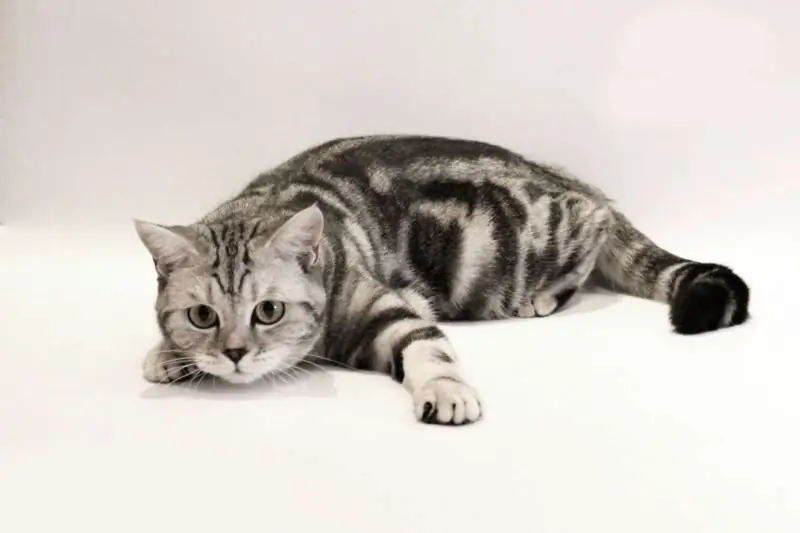
Features of the Scottish Straight breed: appearance, character, difference from British shorthair cats. How to choose a pet, take care of him. Owner reviews
Kurilian Bobtail: Photo, Description Of The Breed, Character And Behavior Of The Cat, Reviews Of The Owners Of The Cat, The Choice Of A Kitten
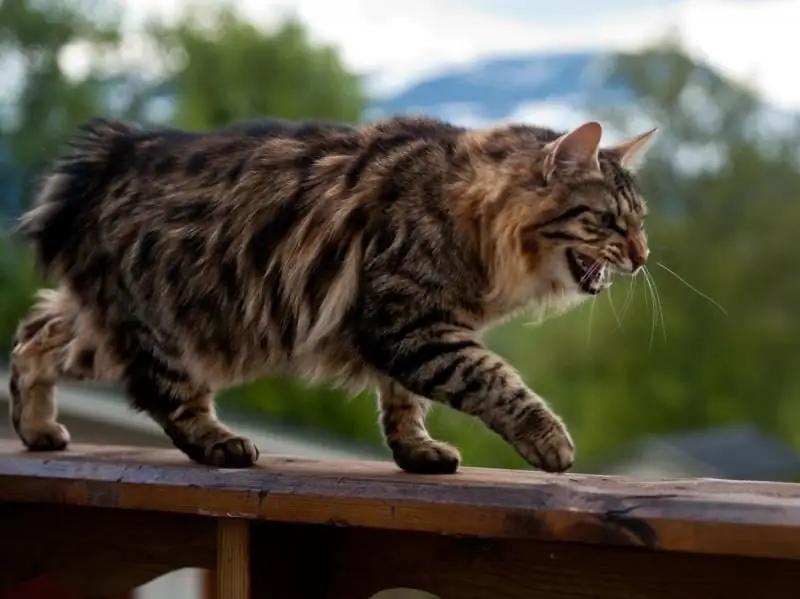
The history of the Kurilian bobtail. Description of the breed. The nature and behavior of Kuril cats. Diseases of the breed. Buying a kitten breed. Care and hygiene. Breeding. Reviews
Persian Cat: Photo, Description Of The Breed, Character And Content Of The Persian, How To Choose A Kitten With A Flattened Muzzle

Description of the breed. Varieties of the Persian cat. Features of the appearance, character and care of the cat. How to choose a kitten. Possible diseases. Host Reviews
Chausie: Description Of The Breed, Character And Habits Of A Houseie Cat, Photo, Choice Of A Kitten, Reviews Of Cat Owners
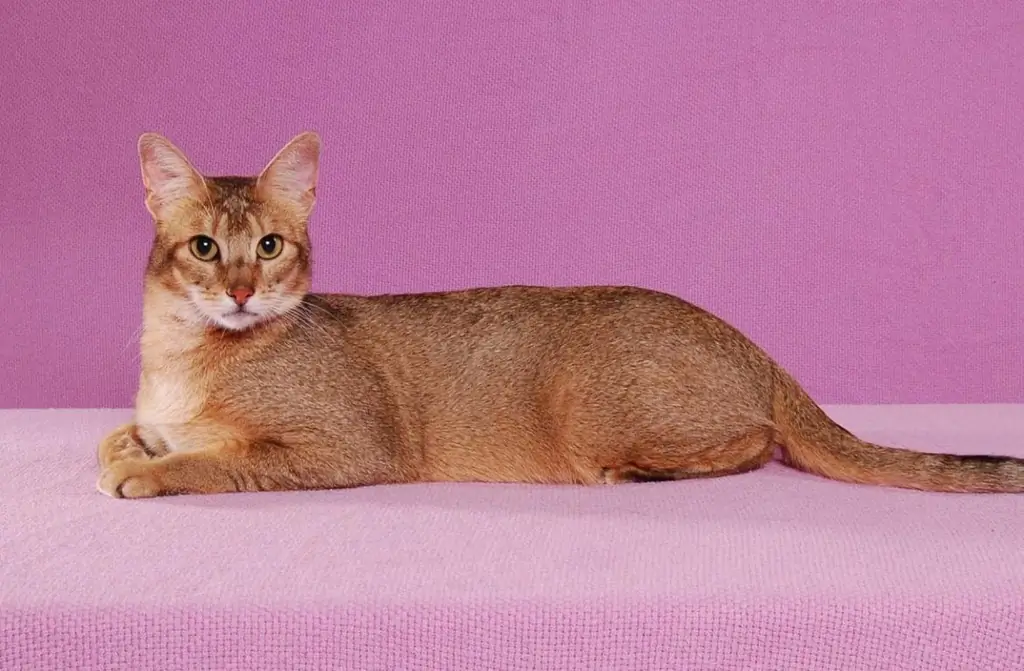
The history of the origin of Chausie. Breed standard. Character, behavior, health. Features of nutrition. Tips for choosing a Chausie kitten. How to breed. Reviews. Video
Bobtail: Characteristics Of The Breed, Photo Of A Cat, How To Feed And Care For, How To Choose A Kitten, Reviews Of Cat Owners
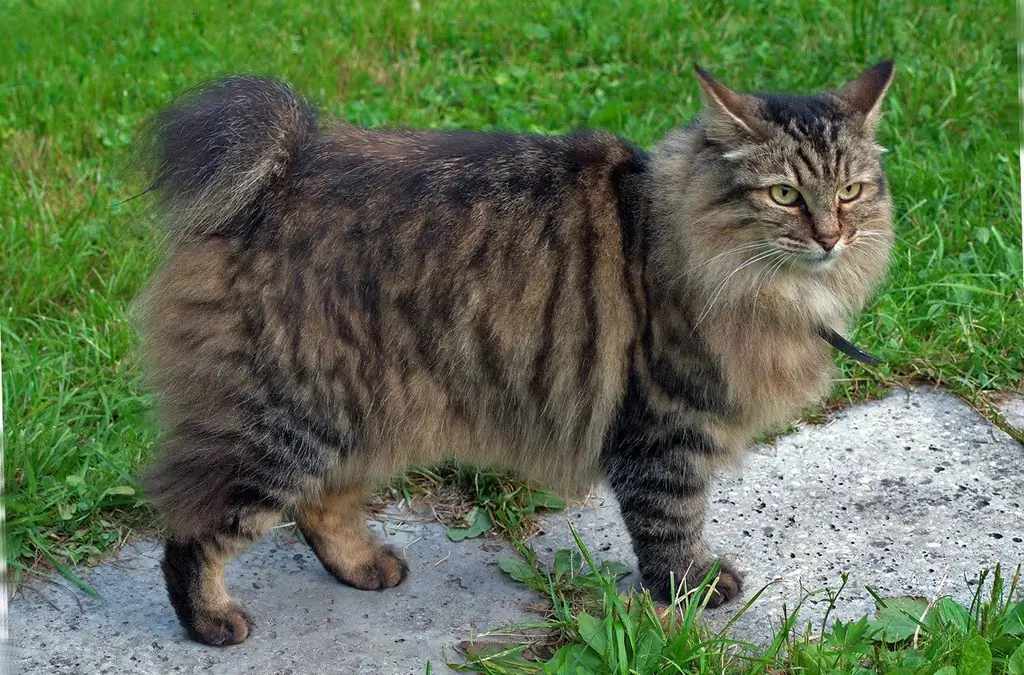
Varieties of bobtails: Kuril, Karelian, Japanese, Mekong, American. The history of the origin of the breed. Features and care. Breeding. Reviews
